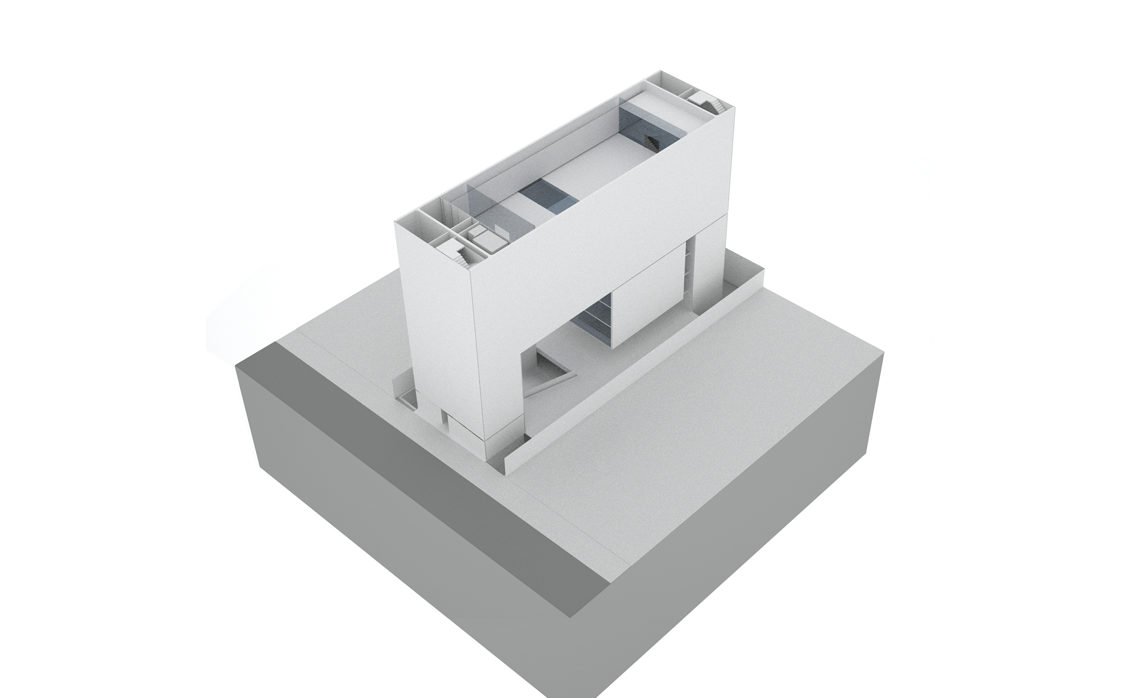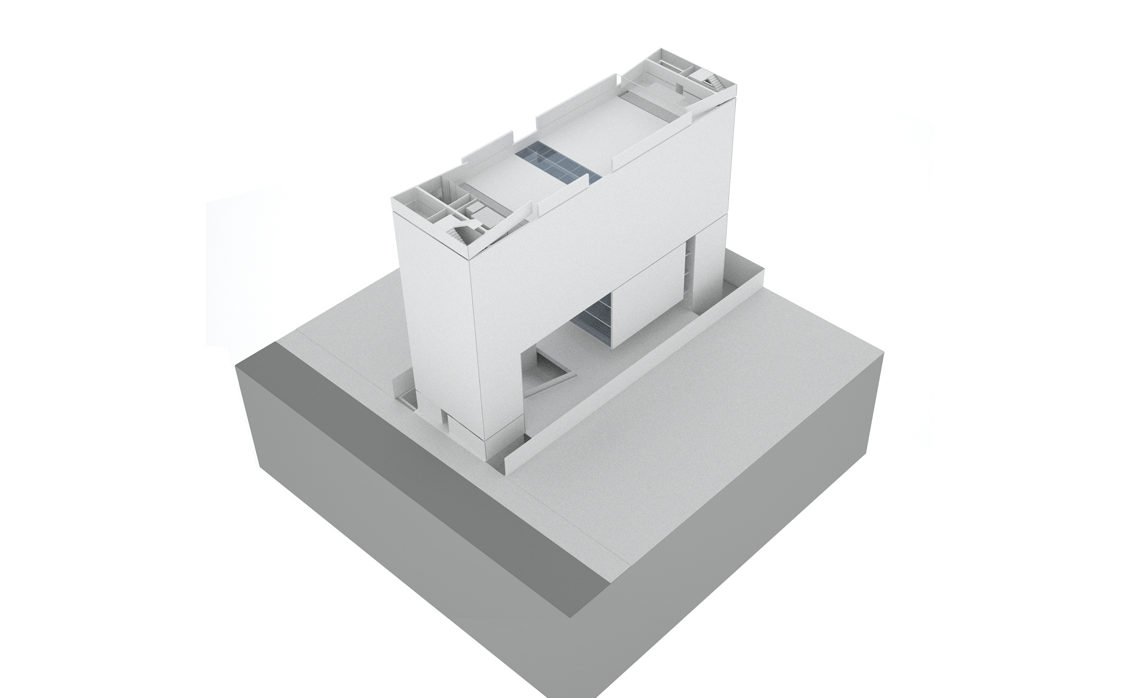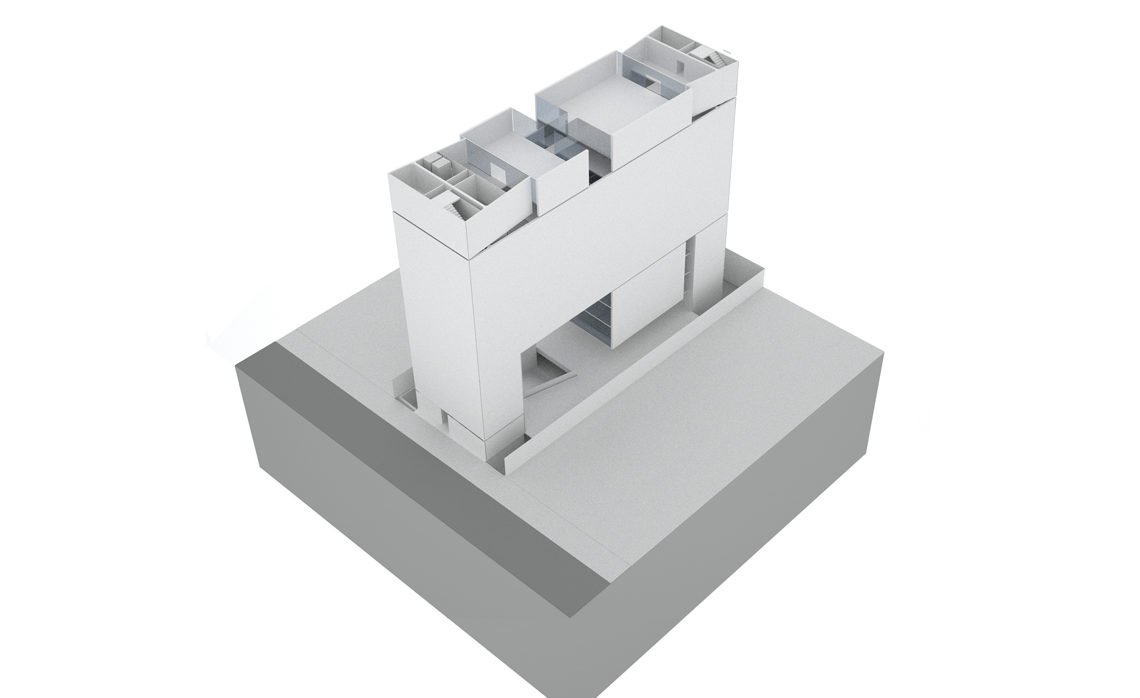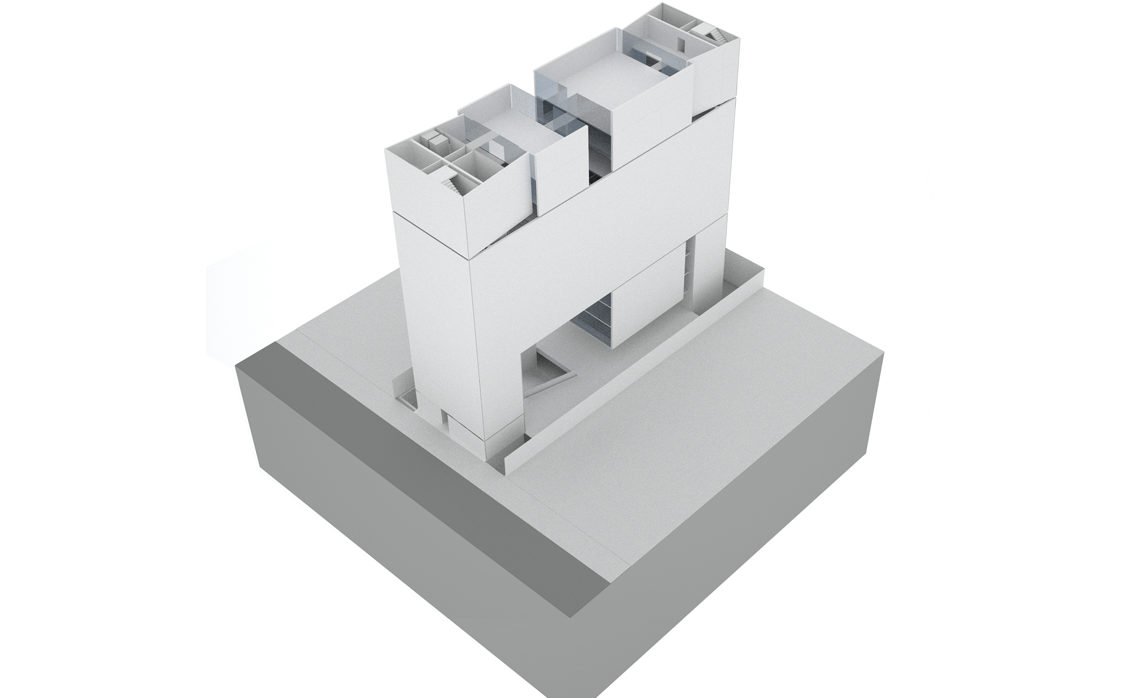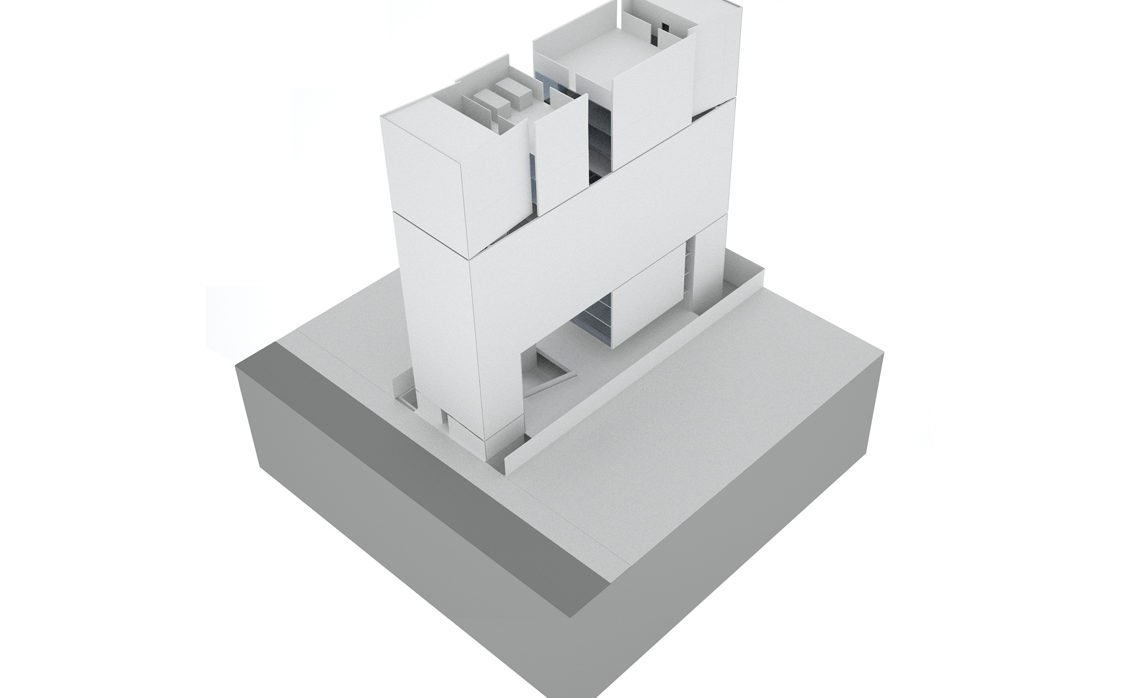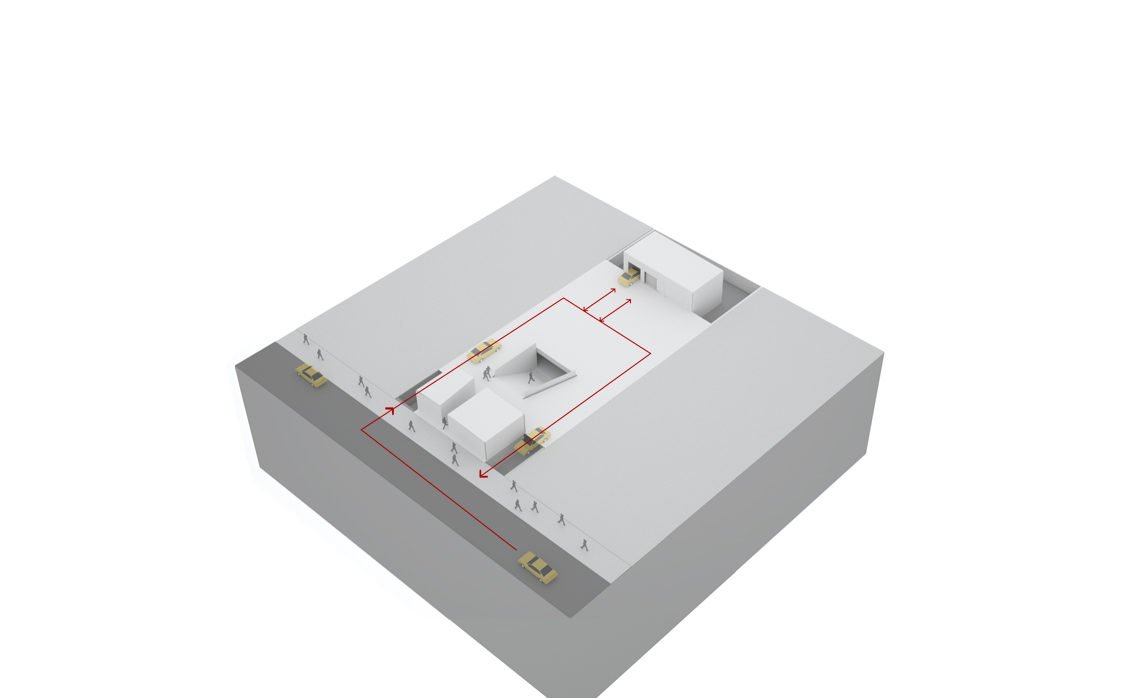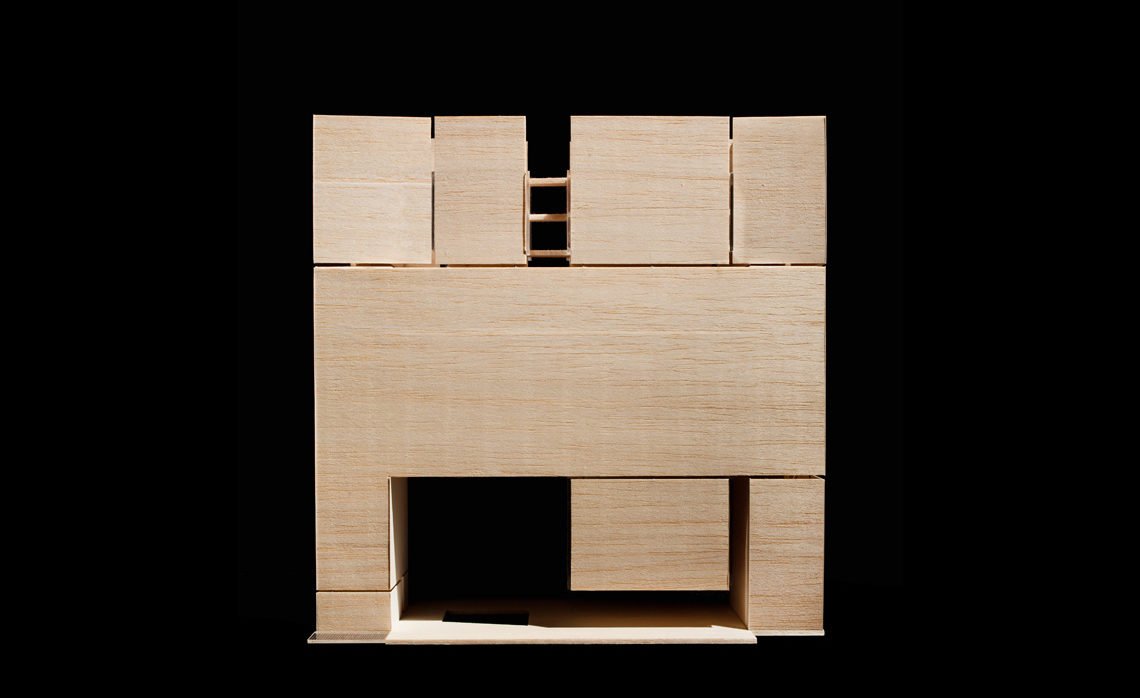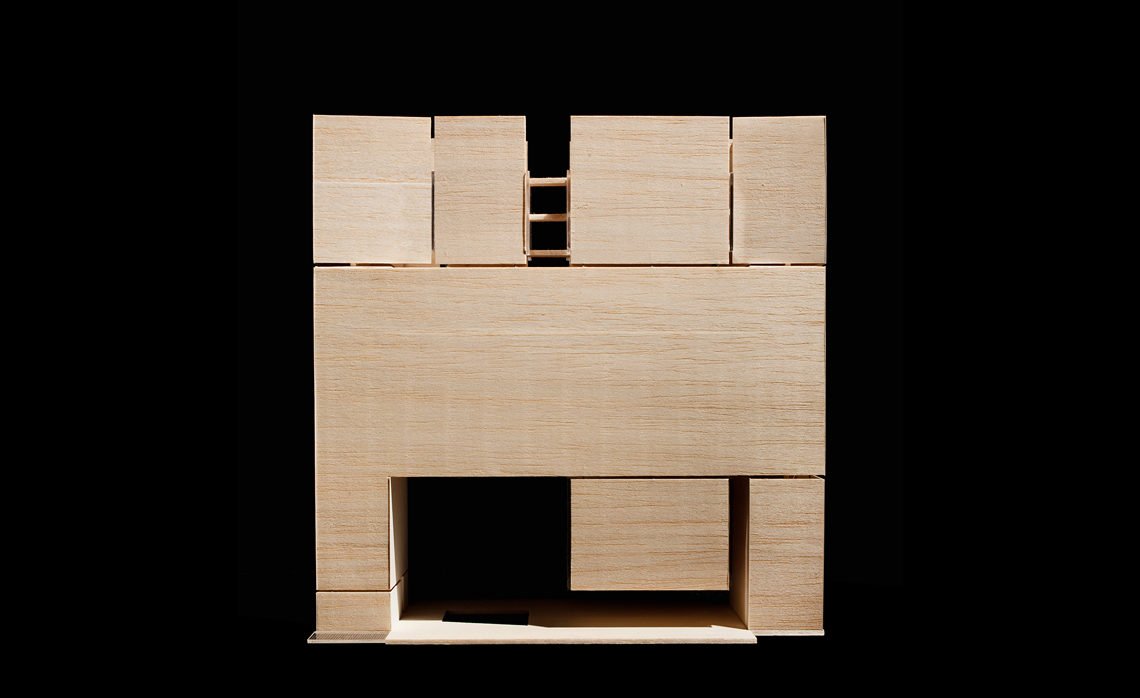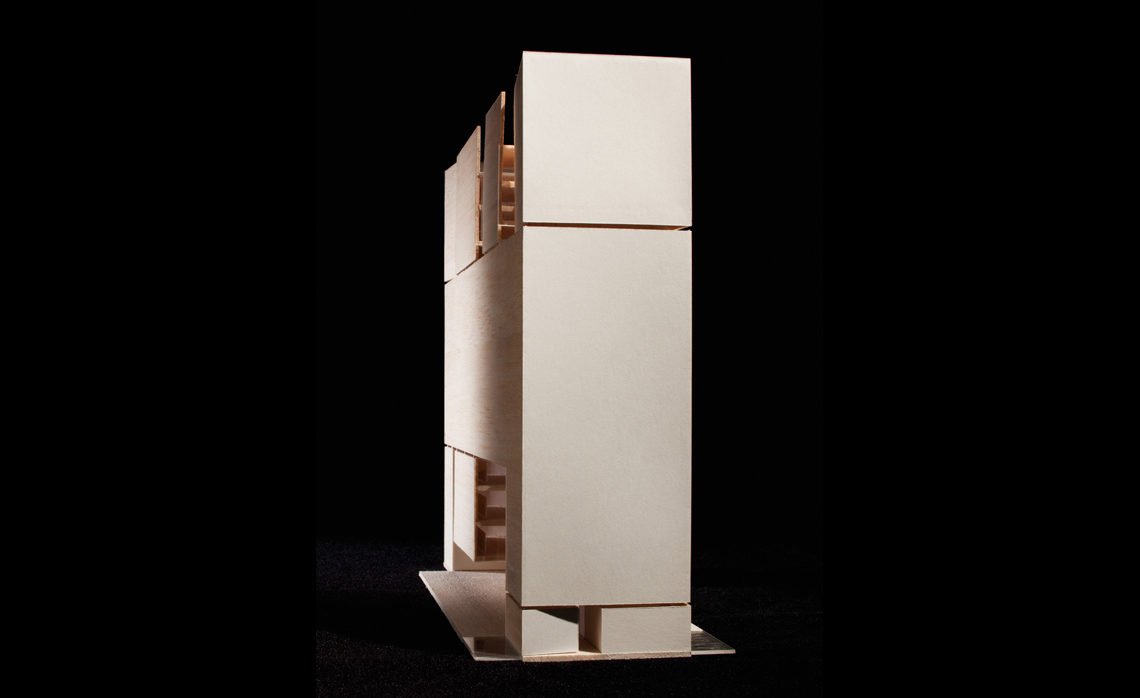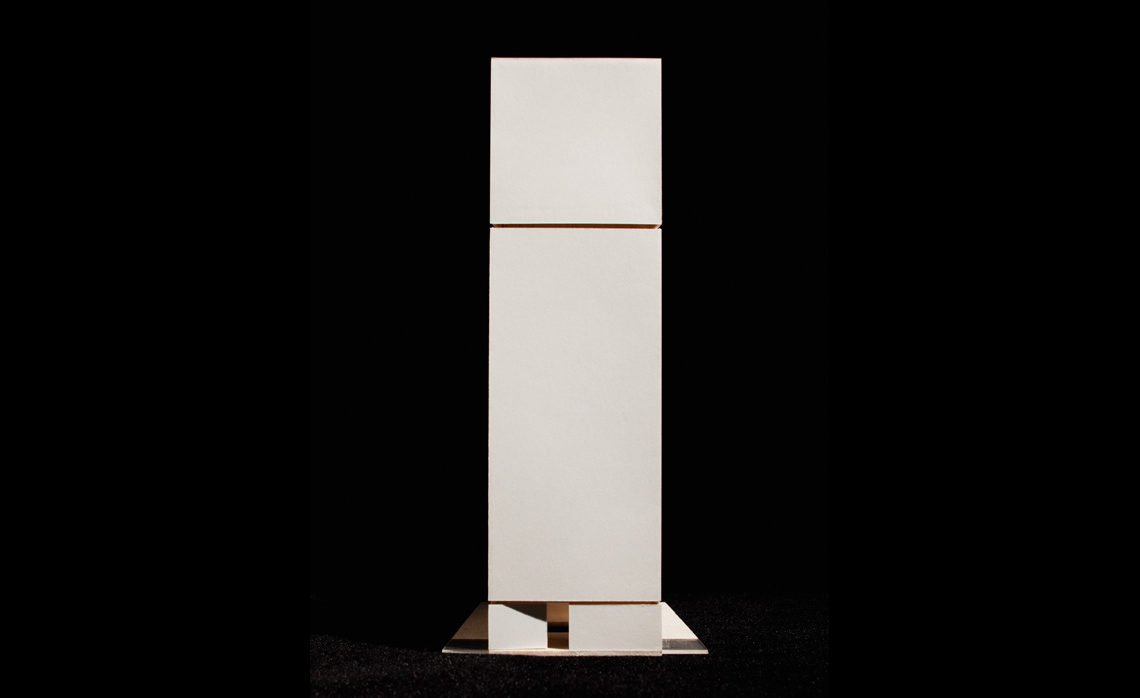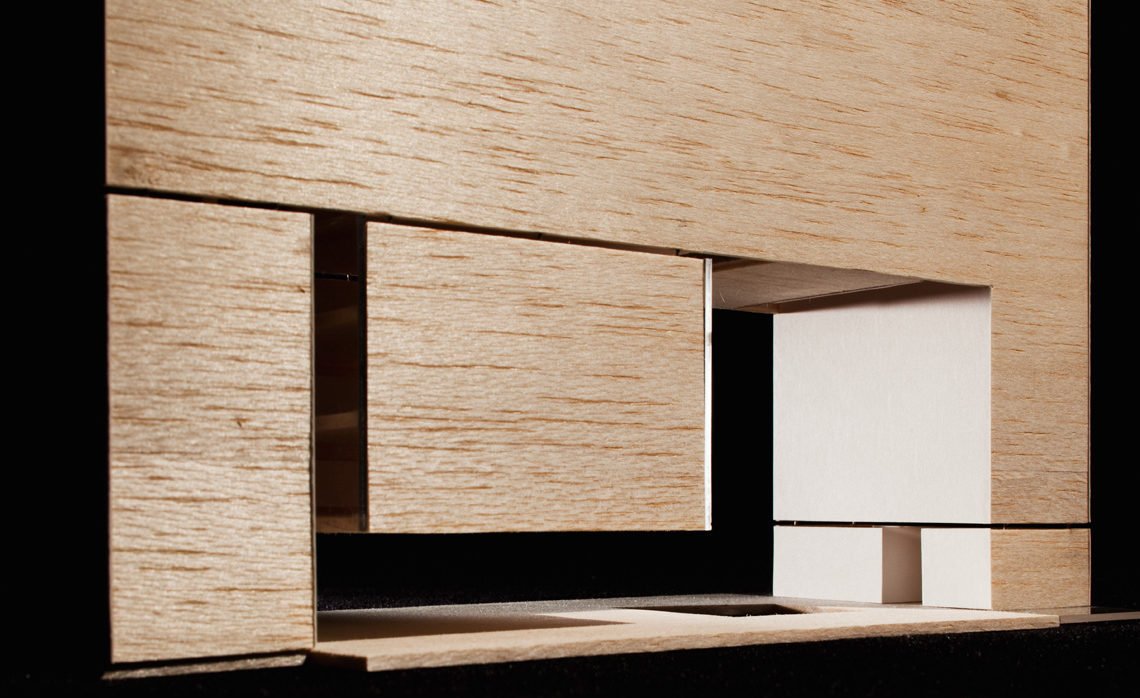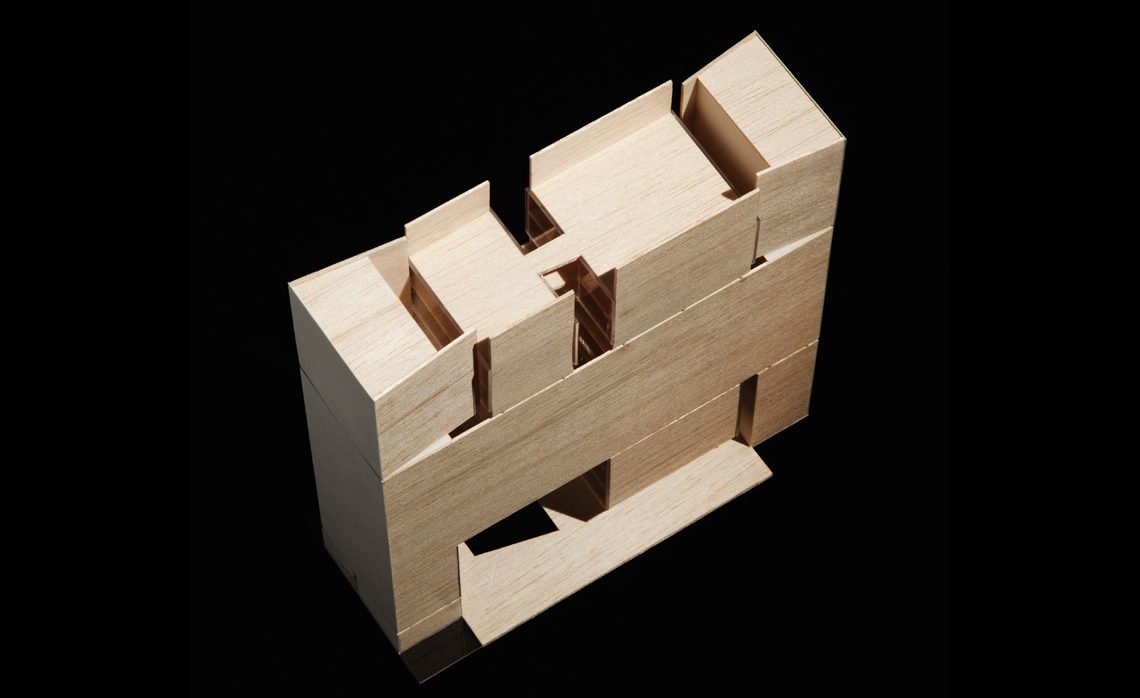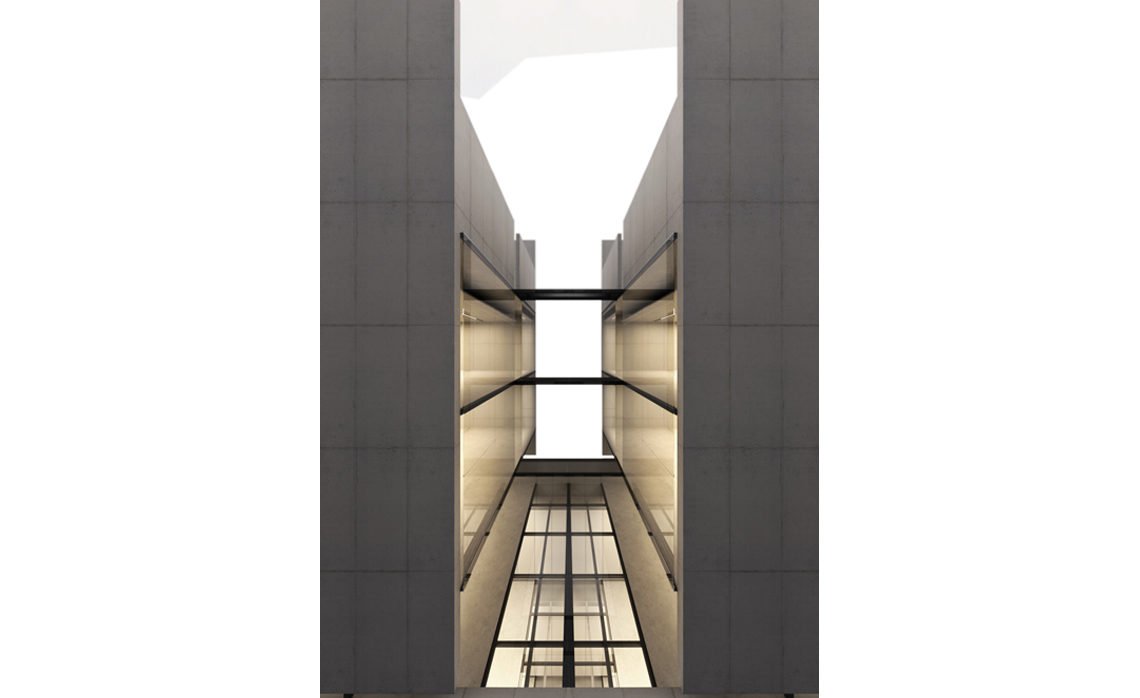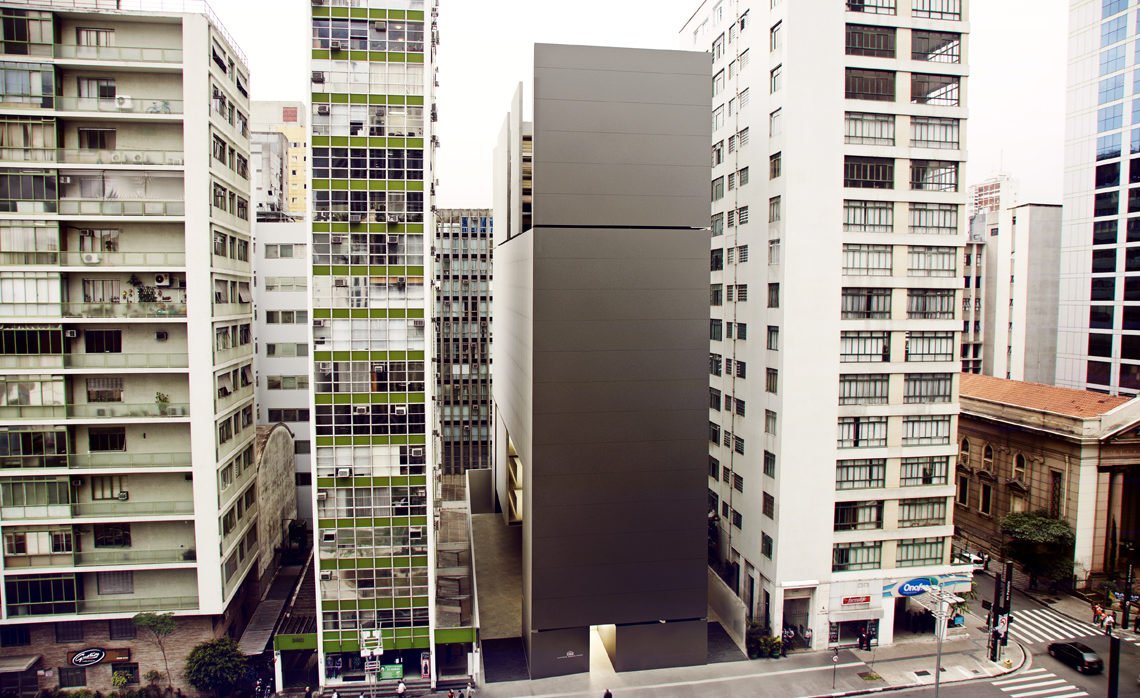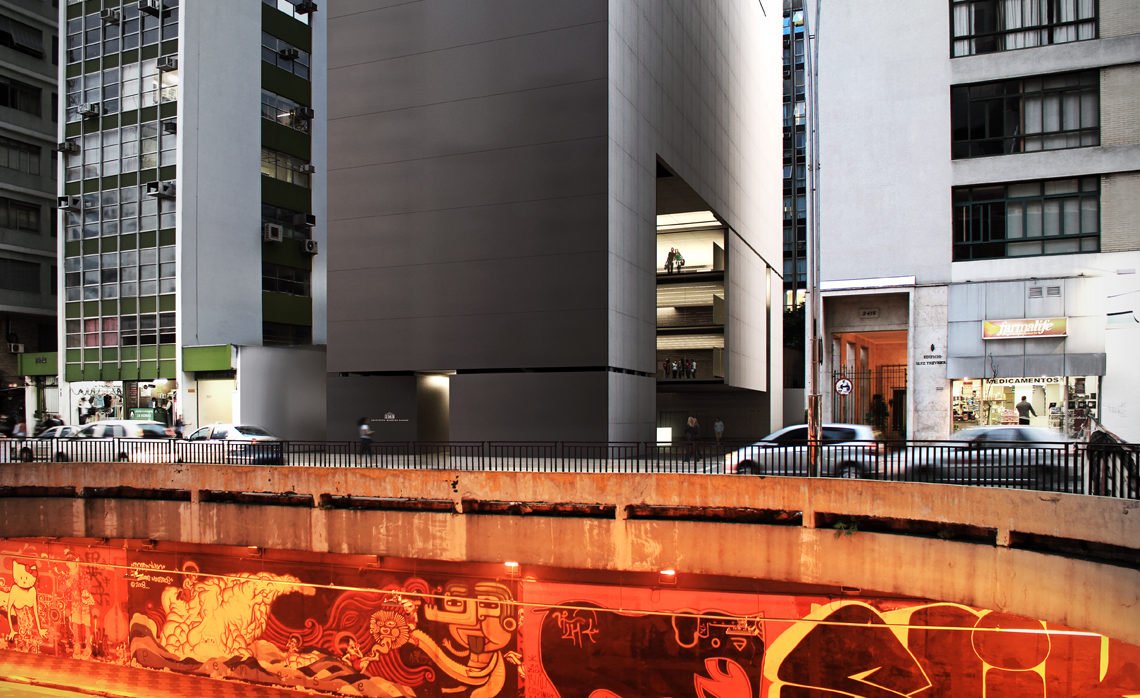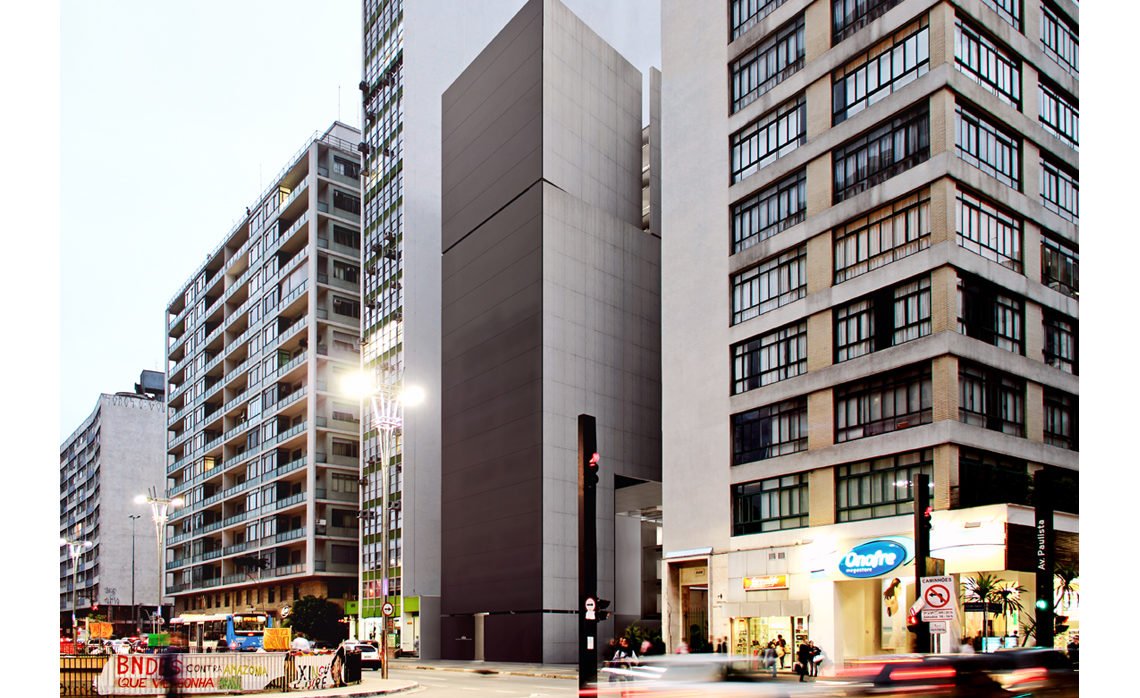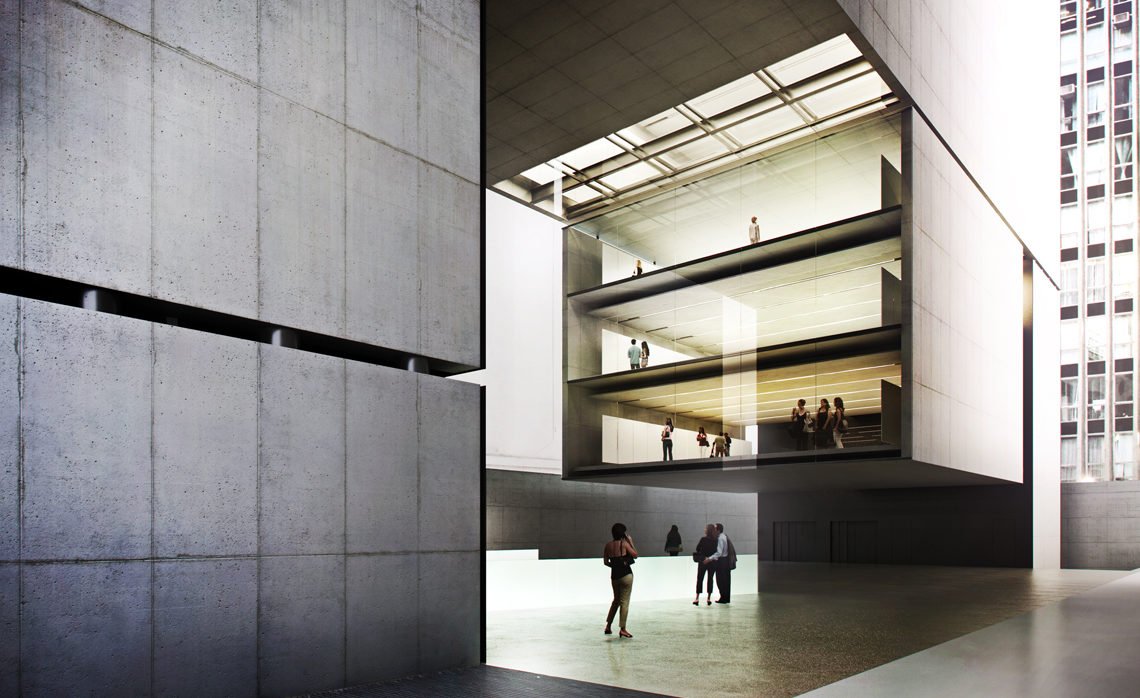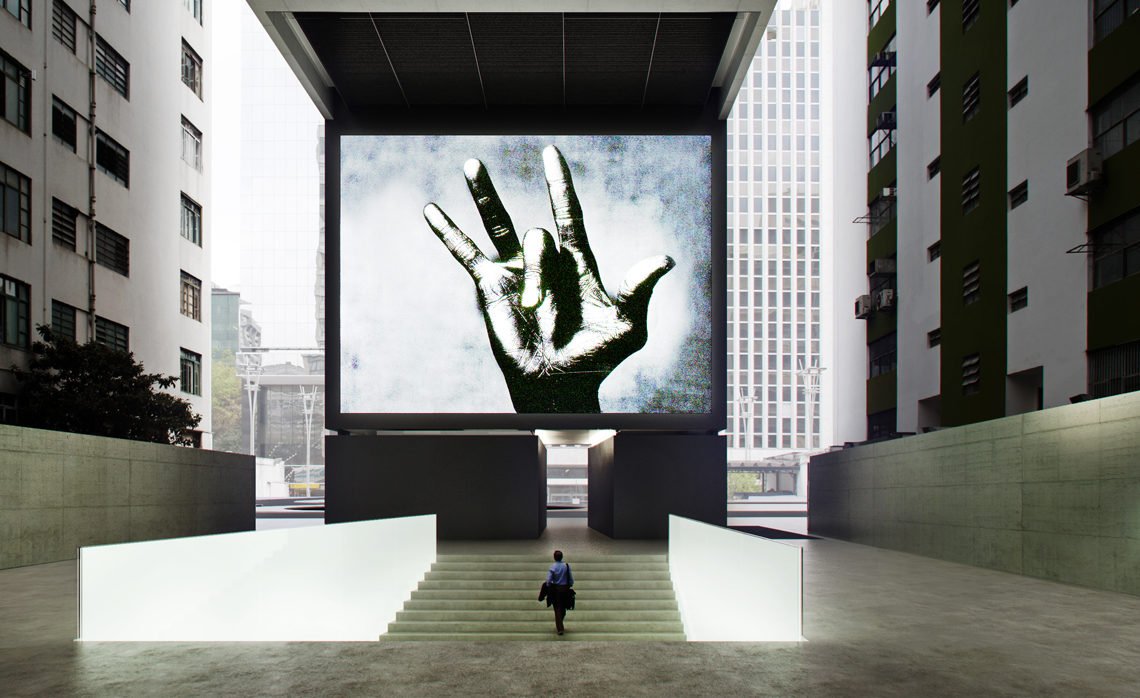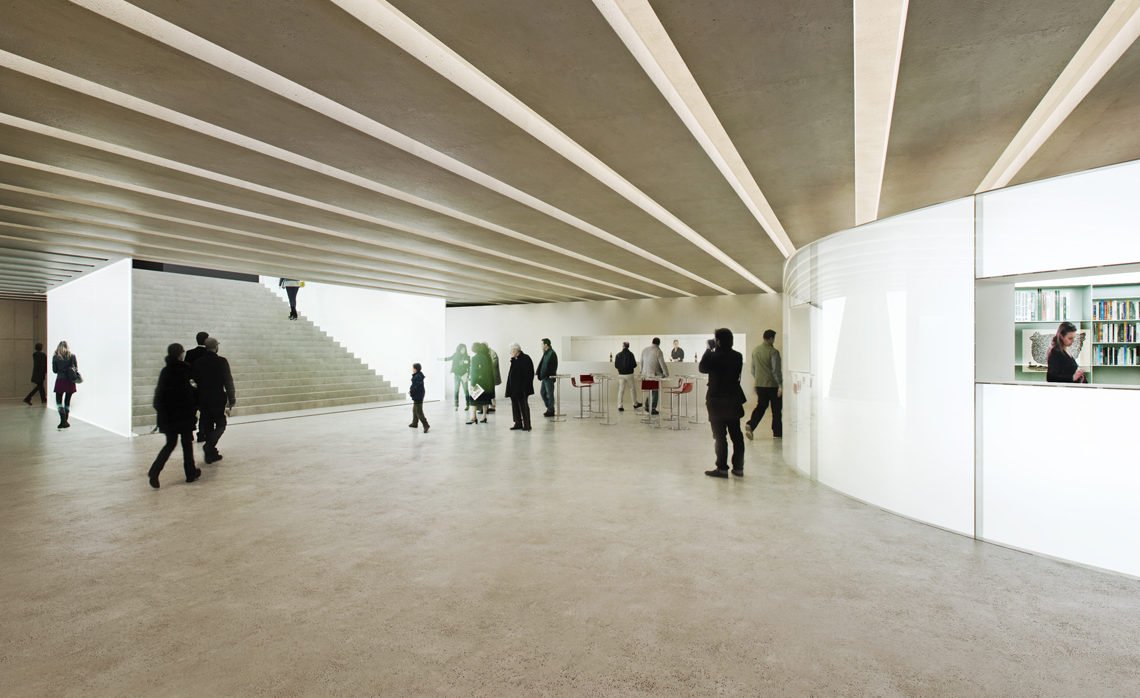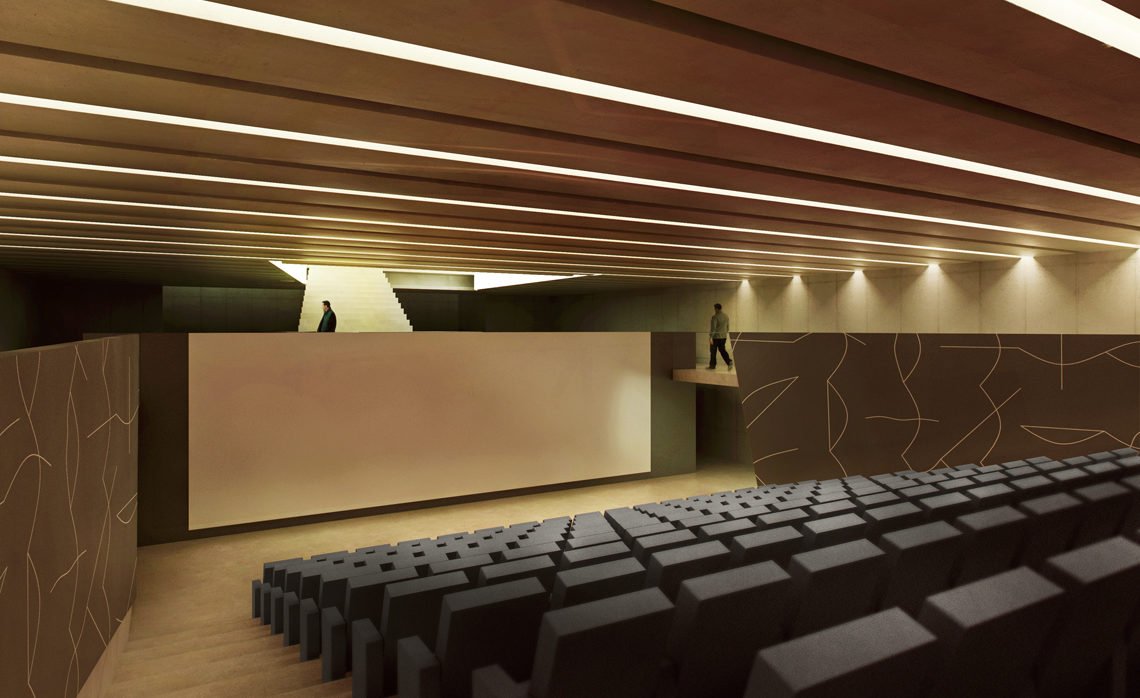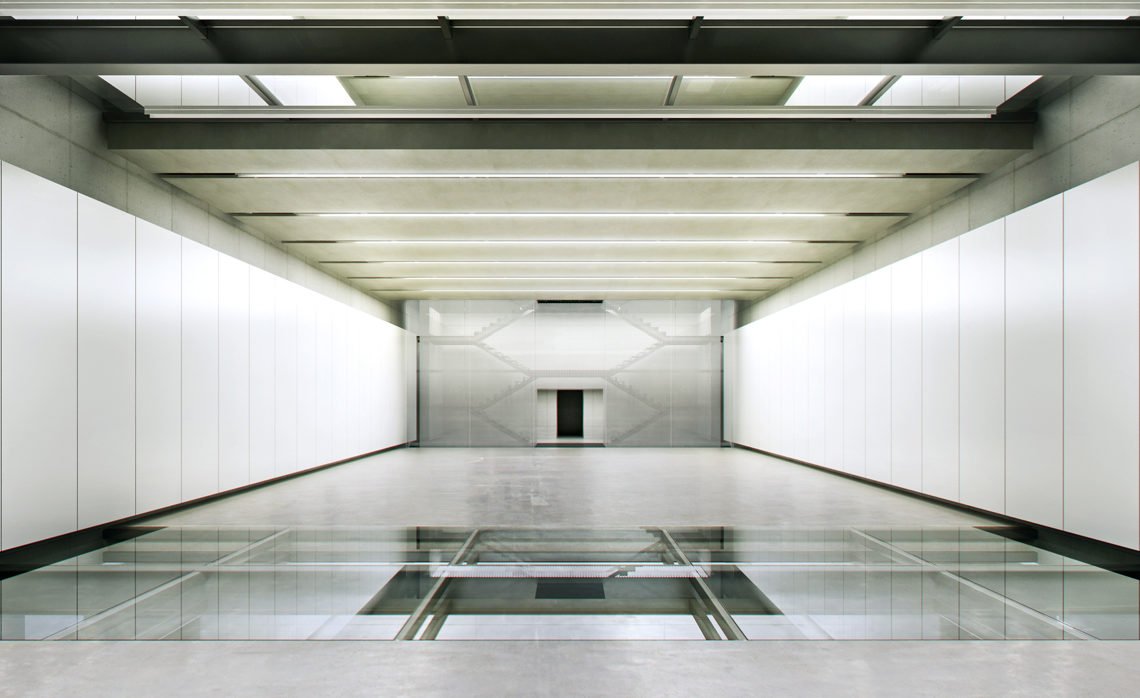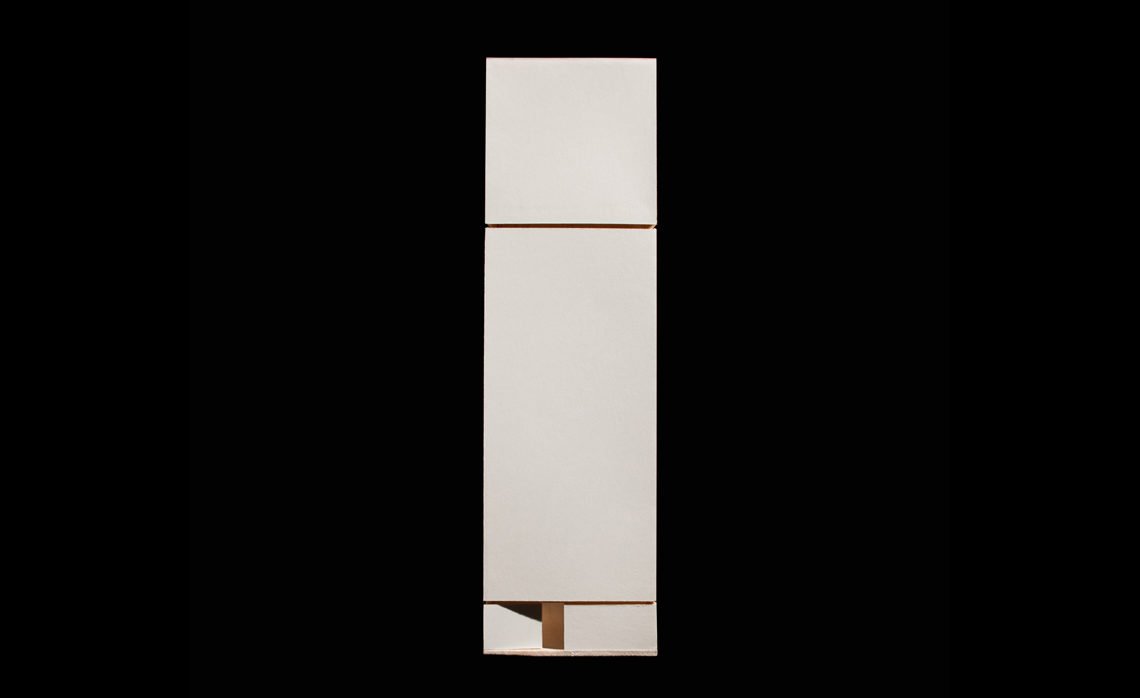Moreira Salles Institute – Competition Entry
Ciro Miguel
Giovanni M. de Faria
Nilton Suenaga
Juliana Braga
Tatiana Ozzetti
Fernanda Cavallaro
ESTRUTURA
Andrea Pedrazzini
Ibsen Puleo Uvo
CORTES E ELEVAÇÕES
DE REFERÊNCIA DA
AV. PAULISTA
Marcel Rofatto
MODELO FÍSICO
Nilton Suenaga
MODELO DIGITAL
Ricardo Canton
FOTOS
Nelson Kon
CONSULTORES:
AES ELETROPAULO
Márcio Silva
COMPANHIA DO METROPOLITANO
DE SÃO PAULO
Argimiro Alvarez Ferreira [gerente de concepção de projetos civis]
AR CONDICIONADO
Thermoplan Engenharia Térmica [Carlos Massaru Kayano]
FUNDAÇÕES
Apoio Assessoria de Projeto de Fundações S/S Ltda. [José Luiz de P. Eduardo]
INSTALAÇÕES
PHE – Engenharia de Projetos Hidráulicos e Elétricos [Wang Mou Suong]
INCÊNDIO
Coronel Altino Gianesini
ELEVADOR
ThyssenKrupp Elevadores
ILUMINAÇÃO
Ricardo Heder
Reka
PAISAGISMO
Raul Pereira
ACÚSTICA
Acústica e Sônica
[José A. Nepomuceno]
CHAPA DE AÇO
Adão Faria
[autor da patente processo
do aço SAC Usiminas]
EFICIÊNCIA ENERGÉTICA
LABAUT FAUUSP
[Denise Helena S. Duarte]
INTRODUCTION
More than a vertical museum connected to the thick ground of São Paulo or a device which brings partially the hectic flow of people from the public horizontal plane to its own vertical axes, the IMS Museum on Paulista Avenue means an opportunity of working on the border line of architectural innovation, combining those images apprehended from experiencing the city into some new arrangements that can add something really fresh to the Paulista context.
How would this building look like?
THE PROGRAM CONDENSED IN FOUR SERVED BLOCKS
The whole program of activities for the IMS Museum was grouped in four served blocks:
[1] exhibition galleries, [2] multipurpose theater, [3] research and learning and [4] administration building.
These four blocks are exclusively dedicated to its specific functions. They were released of containing any mechanicals or facilities, which were completely displayed in two servant towers. The towers are completely detached from those blocks, just steel grids were used to connect both.
Each one of those four blocks corresponds to an independent volume, clearly recognizable as a component of the building, as a portion of its structure and as a phase during its construction process.
AN ABSTRACT BUILDING / A RESTFUL PIECE IN THE PAULISTA CONTEXT
The two main blocks correspond to the exhibition galleries and the multipurpose theater. Both of them require a highly controlled light condition, which means windows are not exactly required. It is worth to emphasize that windows are the most widespread architectural element, or figure, featured in every single building. In this specific case, this element not being necessary can be taken as an advantage for designing purposes imprinting a unique feature to the IMS Museum placed at the specific context of Paulista Avenue: a building whose architectural elements are not the protagonists, a building with no figures such as doors windows and stairs, a building whose scale is not directly done by those elements and, for that reason, its apprehension demands something else. In other words: a more abstract architecture.
This assumption, of an abstract architecture, has a profound meaning in the metropolitan context of Sao Paulo, because it considers that in such environment the building itself is dissolved in the whole. But there is one aspect that must be highlighted: this kind of dissolution produces, symbolically, the inverted effect. Because, in this case, the new component’ speech reverberates in each single precedent one. Thus, in this case, the dissolution potentiates.
In despite of having no windows, each space in this building is proper and fully lit. It means that the building façade has an unexpected serenity and that this building will be highlighted also as a pause in the everyday noise, as a restful piece placed in a restless avenue.
THE MAIN CHARACTERS: EXHIBITION GALLERIES AND THE MULTIPURPOSE THEATER
Those two main blocks, exhibition galleries and the multipurpose theater, have a clear expression in the architecture of the building. While the exhibition galleries correspond to the dominant volume above ground level; the multipurpose theater is the center of the underground piece.
[1] EXHIBITION GALLERIES BLOCK
The exhibition galleries correspond to the beams from which hang the research and learning block and support the administration building. Each one of these three blocks above the ground can be clearly read from outside.
All mechanicals, elevators and staircases were arranged in both front and back of the building, made as two servant towers, in order to free the maximum width possible to the exhibition galleries. As a result, the exhibition galleries are made by three double high floors, 350m² each, as a kind of infrastructural space for multiples arrangements and situations. Although displayed in three different levels, these floors can be visually connected through a glass floor segment with transparency control. Galleries are interconnected by a continuous flow of vertical paths, stairs made specifically for this purpose. These stairs were placed inside the back servant tower behind a perforated steel sheet calibrated in a way to be seen as a surface from the exhibition space and transparent as a louver from the stairs, offering a view of the exhibition to the people walking up and down.
[2] MULTIPURPOSE THEATER BLOCK
The multipurpose theater was put underground to offer the best acoustic condition with no interference from street noises. The vibration from the subway under Paulista Avenue is more constant and predictable and it can be prevented by using elastomeric bearing isolating the auditorium portion from the whole structure. Besides, its situation, underground, is the only way to offer the whole width of the site for the auditorium. In addition, the structure above up to the ground level has a twenty meter span [the width of the site] in order to free the auditorium space from any interference.
As a multipurpose theater and taking advantage of having a whole dedicated floor to it, the foyer and auditorium can eventually become one single space by sliding down the acoustic wall and the projection screen. Thus it can eventually accommodate a larger audience in the side and back aisles and even on the foyer and stairs. If convenient, this room could even be more flexible as a “black box theater” allowing different arrangements such as theater, movie theater or arena.
THE ACCESS PLAZA AND THE ACCUEIL
The IMS Museum public entrance requires enough space to receive flows of people arriving either by walking or by car. Freight trucks require a proper clearance and maneuver area that must be no less than a circle defined by the whole site’s width. There is no conflict between cars and trucks since truck circulation it that area is only allowed in quite restricted times. Therefore car and trucks can both share the same area, which is used for arrival of material late night and early morning and it is also a generous buffer zone for cars during the IMS Museum opening times.
Pedestrian’s entrance from Paulista Avenue is the only opening in all of the building façades. A triple height atrium gathers people who come walking or by car. This plaza is an in-between space, not yet inside and not street anymore, it is a necessary buffer zone in between. From there a wide stair invites to walk down into the Accueil.
Directly connected to the avenue and at the same time properly preserved from its hectic rhythm, the Accueil welcomes, informs and filters people leading them to their different destinations: exhibition galleries, research and learning, offices and multipurpose theater. More than this, the Accueil hosts the IMS store and café. Occasionally, part of its lobby could be used for temporary exhibits.
Both levels, access plaza and Accueil, were combined as the main strategy to solve the challenging problem of the access to this building at this location.
[3] RESEARCH AND LEARNING BLOCK
The hanged volume underneath the exhibition galleries, in structural terms, is made by three slabs and corresponds to the programs related to research and teaching: library, classrooms, multimedia, small exhibition and vernissages. They were combined as a clearly readable block, the third public destination in the museum with its own elevators hall. This block welcomes the public. Through its inner curtain wall façade, it acts as a lamp to the triple high open atrium and as an announcement or a small showcase of the IMS Museum activities. This hanged volume, so well lighted and unexpected suspended volume surprises those who enter in the Plaza through the only opening to the street. At night it works as a lamp lighting with its own light the access plaza.
[4] ADMINISTRATION BUILDING
The administration building corresponds to a small portion of the museum. It is the fourth destination in correspondence to the forth program block. Crucial for the IMS Museum operation, it is not directly related to public areas; in addition, its working time is more restricted than the public one. It requires its own identity. This part of the program was displayed on top of the exhibition space, floating over the shared open terrace. At this position, the administration building is like a small building resting on the massive beams of the wall façades of the exhibition galleries. Thus its structure could be lighter, more open and well lit. The side walls of the servant towers were slightly inclined in order to provide openings to Paulista Avenue and Bela Cintra street. Besides, a void in the middle office plan enhances, as a patio, the natural light inside the offices. This void is first perceived as a cut or a gap on the top portion of the side façades, but its architectural role grows since it interconnects different spaces: it brings natural light to the open terrace café-bistrot and it is the skylight — transparent floor — to the exhibition galleries.
THE PARKING GARAGE
As operated exclusively by valets, two elevators bring cars to four levels of parking garage. It has capacity of 39 generous parking spaces each, 156 in total. Some of them were converted into motorcycles lots on the first level. This capacity comfortably meets the current municipality requirements. It is plausible to suppose that the requirement for parking garage tends to reduce in the future, therefore maybe one parking floor could be converted in an extra warehouse for exhibitions.
STRUCTURE AND CONSTRUCTIVE PROCESS
THE UNDERGROUND PORTION
the underground portion has two different situations or two different requirements:
- Its first level, which means its first two slabs, exempts the use of retaining walls because the neighbors parking garage are on that level.
- Below this level, retain walls are required. The recommended solution is quite well known and it is a widespread constructive process in São Paulo, which consists by lines of ‘H’ profile steel columns driven into the ground by percussion method each 1.5m. During the excavation process the soil is retained by using wood boards displayed behind those profiles; in addition, every three meters these profiles are anchored by a line of provisional rods. We made a preliminary request to the Metro subway company and they did confirm the viability of the solution suggested by our soil consultant who has himself made some buildings on the same avenue and several others in similar situation.
The groundwater level suggests the lower level for the underground construction. Although the level showed by the soil survey is not completely reliable, the experience of our soil consultant indicated that we can fix this lower level at -20m as adopted in the newer buildings on Paulista Avenue.
The structure follows those two different situations as well, which also has a correspondence to the program: parking garage and multipurpose theater plus accueil.
A reinforced concrete curtain is casted incorporating the profiles on the lot boundaries. Concrete slabs with no beams will be used in the parking garage; these slabs are supported by the side walls and also by three lines of columns inside. As these slabs are being cast, therefore anchoring the retaining walls, the rods are released.
The first two slabs, those close to the ground level, are proposed in a ‘I’ type of precasting prestressed concrete slab designed to face a 20m span. These pieces will rest just on the side retaining walls in a level already free from the ‘H’ steel profiles. Just the web of these beams arrives on the wall in order to free a ventilation shaft to the parking garage.
ABOVE GROUND PART, THE BUILDING ITSELF
[a whole broken into fragments, fragments combined as a whole]
The structure and the constructive method strategy mix reinforced concrete cast in situ and precast concrete slabs.
Two parallels main beams, 18.35m high, face a 32m span. By using bearing, each one of those beams rests on two columns [0.50m x 6.50m]. The bearings produce a gap which clearly detaches beam and columns. Each column receives 2,500 ton of load transferred to the ground by direct foundation. Transversally, each two columns were linked by a web which makes the columns work as an “I” profile [6.50m x 13m]. As this web has 3.2m of setback from the front and back facades, the building front and back facades are made with light material, steel sheet, contrasting to the concrete side facades.
The bottom of the beams lies 13.56m above the ground level. The space in between these beams will receive precast prestressed slabs to make the exhibition gallery.
The set of four columns and two beams act as an infrastructure.
Initially, this set hangs the research and learning volume. As this block has to be constructed after the beams, the distance necessary to cast it will produce a gap which shows the steel hanger and clearly detaches these two structural segments in correspondence with those two blocks of activities.
Finally four walls rest on top of those beams by using subtle steel pins every 2m. Here again they carefully preserve one more gap detaching the administration block and the exhibition galleries. Precast prestressed concrete slabs in between make the office space. Underneath, exactly on the gap, a floor was kept free as an open terrace to the café-bistrot.
THE SERVANT TOWERS / MECHANICALS
The servant towers coincide with the “I” profile columns. Elevators, staircases, chillers and fan-coils, restrooms, kitchens, small storage spaces, maintenance rooms, in short, all items composing the servant spaces were accommodate in both 6.5m x 13m two columns.
In this case, the strategy produces more the clean plans and optimization of the served spaces. Associated with the structural solution, it makes possible the existence of that core as completely levitating, as if we had a building with no one single column. It overcomes a border line to turn impossibilities into a possibility. As if, in a flash of time, we could make happen what would never be.
PUBLICAÇÕES:
Periódicos
ANGELO BUCCI
monolito / brasil n 08 / 2012
